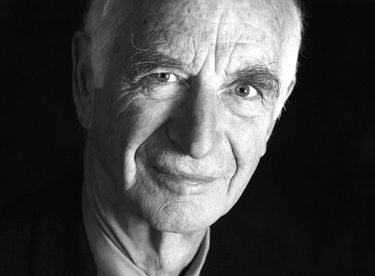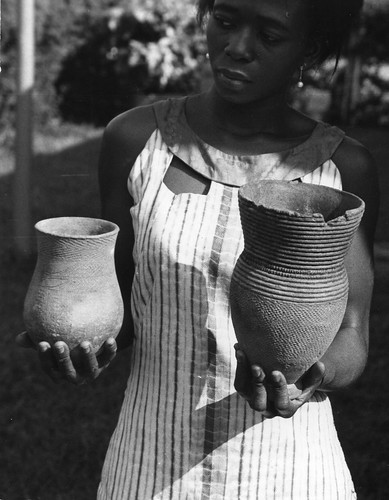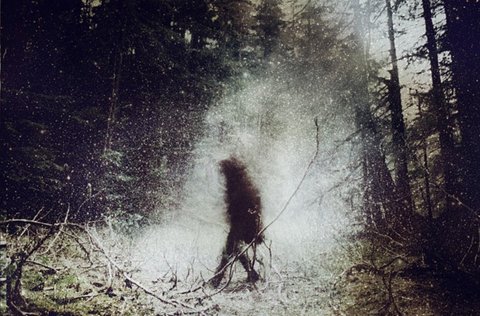A series of talks by Michael Stone about chapter 3 of The Yoga Sutra a text written by mysterious author(s) often named Patanjali in the second century. Notes by MH include reveries and imaginings. Centre of Gravity Fall 2011. www.centreofgravity.org
James Hillman
This talk is dedicated to my mentor James Hillman who died two days ago. He was a maverick American psychologist who took over the Jung Institute in Zurich after Jung died. I learned so much from him, I think 1/4 of the way I think is shaped by him. I started studying with him at a moment when I thought that Western psychology was a disaster and he taught me how to rethink the whole project.
He wrote a book called We’ve Had 100 Years of Psychotherapy and the World Is Getting Worse. Sure, his genius friends were in therapy, but was the culture becoming kinder and wiser? He recounted to me a dream where he was doing analysis, and then the patient disappeared, and then the couch disappeared, and the wall vanished and its opening revealed Atlantic City. He thought: perhaps I could use psychoanalysis on the world, take it out of the clinic and out of the skin bag.

James Hillman: “I think there is a paradigm shift going on in the culture. The old psychology just doesn’t work anymore. Too many people have been analyzing their pasts, their childhoods, their memories, their parents, and realizing that it doesn’t do anything — or that it doesn’t do enough…
I’m not critical of the people who do psychotherapy. The therapists in the trenches have to face an awful lot of the social, political, and economic failures of capitalism. They have to take care of all the rejects and failures. They are sincere and work hard with very little credit, and the HMOs and the pharmaceutical companies and insurance companies are trying to wipe them out. So certainly I am not attacking them. I am attacking the theories of psychotherapy. You don’t attack the grunts of Vietnam; you blame the theory behind the war. Nobody who fought in that war was at fault. It was the war itself that was at fault. It’s the same thing with psychotherapy. It makes every problem a subjective, inner problem. And that’s not where the problems come from. They come from the environment, the cities, the economy, the racism. They come from architecture, school systems, capitalism, exploitation. They come from many places that psychotherapy does not address. Psychotherapy theory turns it all on you: you are the one who is wrong. What I’m trying to say is that, if a kid is having trouble or is discouraged, the problem is not just inside the kid; it’s also in the system, the society.” (On Soul, Character and Calling: A Conversation with James Hillman by Scott London, http://www.scottlondon.com/interviews/hillman.html)

Moments
We’ve been studying a text that is approximately 2200 years old. In it, Patanjali teaches that we can only experience our life from moment to moment. When you slow down – and meditation is a way of slowing down – you can see how we create this thing I call myself. And that consciousness is a product of the coming together of our sense organs with sense objects. It is a continual process of arising and passing away. Each moment orients towards or away from stillness. When you’re practicing equanimity and being still – you’re shaping neuropsychology, you’re affecting the genetic code in each moment, in other words, you’re affecting the groove that’s oriented towards stillness or away from it. Each moment of cultivating non-reactivity can begin to chain together to produce a larger stillness, a momentum of stillness, and then what Patanjali calls ekagrata arises: one pointedness. Often in meditation we’re slipping into laziness, hunger or longings for espresso. But when we can link together enough moments of stillness we are held by that stillness. This is the difference between concentration practice and samadhi.
Effort and Letting Go
Abhyasa means practice, the effort of practice.
Vairagya means letting go.
In the sixth and seventh limb of Yoga (dharana and dhyana) (mindfulness and concentration), there’s abhyasa – the great effort of practice. It takes a lot of effort to hold us in that place of non-reactivity. To concentrate on moment after moment. Samadhi is characterized by vairagya. One releases into stillness.
“Concentration and absorption are different aspects of the same yoking process, the former belonging more to the effortful domain of abhyasa, the latter to vairagya. Together they restrain the patterning of consciousness (citta-vrtti) to the point where it is reflective, and subject, object and perceiving coalesce.” (The Yoga Sutra of Patanjali by Chip Hartcranft)
Matthew Remski and Scott Petrie
3.9 Deeper states are cumulative, building momentum and depth through feedback.
3.10 Meditative feedback can create a continuous flow that overwrites other patterns.
3.11 As this happens, pattern-fragments dissolve, and the feeling of integration deepens.
3.12 As integration deepens, there is equanimity between thoughts rising and dissipating.
3.13 Such integration gives insight into what we sense, how we sense, and the passage of time.
Chip Hartranft
3.9 The transformation toward total stillness occurs as new latent impressions fostering cessation arise to prevent the activation of distractive stored ones, and moments of stillness begin to permeate consciousness.
3.10 These latent impressions help consciousness flow from one tranquil moment to the next.
3.11 Consciousness is transformed toward integration as distractions dwindle and focus arises. 3.12 In other words, consciousness is transformed toward focus as continuity develops between arising and subsiding perceptions.
Time, Form, Conditions
Consciousness is made up of the same material as nature. It changes in the same way as everything else. “All matter is like clay – it may be collected in many forms – baked, fired, cold, worn, scratched…” Clay has a life span, a knowable form, and a set of conditions. You could have a clay pot and it’s hot right now, for instance. Patanjali says that everything, even consciousness, exists in this way. Consciousness is not separate from conditions.
By asserting that substances have substance, that a clay pot is real, and exists in time and in conditions, Patanjali refutes a dominant Buddhist thread at the time, which is that everything in the world is a projection of your mind. Though this idea is very different than what the Buddha taught.

Homeless
James Hillman liked to tell a story about someone going to a therapy session and passing a homeless person on the way. When he saw his shrink he talked at length about all the issues that this homeless person brought up for him. But at the end of the session, the homeless person is still homeless! Or as Patanjali says: the world is not just in your mind.
When you’re concentrated and find samadhi, held in the momentum of stillness, yoked with your breathing, or with sounds, there’s not too much analysis and it feels good. You can see that every mood is unsatisfying and unreliable, impermanent and impersonal. In mindfulness there’s still a “me” but there can be a sense in samadhi that these moods don’t refer back to a me. They’re like weather conditions, passing through awareness. The deep lesson is that nothing belongs to you. Can you imagine having a mood and not attaching to it, not gripping to it, not insisting: this is me! When you’re really quiet, you can see how thoughts always come after sensation, the impressions of a moment, thoughts are forever chasing after sensations, and they’re always missing them. When this sense of my world and my experience begins to fall away, there’s a knowing behind the knowing, a knowing that doesn’t take the shape of what is known. Patanjali calls this: purusa, or pure awareness. Michael translates this as: being a person. Citta or consciousness is the movie playing and purusa is the one watching it, though perhaps that’s just another citta way of describing what can’t be put into words. “You” are behind consciousness, but not the “you” who you think you are.
Purusa can see citta, but citta can’t see purusa because citta just turns it into more citta.
Perhaps this deep knowing is the teacher inside us that never leaves. This wisdom is not separate from you, and you can’t think your way there. When you see a wall, or a face, or experience a sensation, can you experience it as a moment in time? As it arises and passes away.

Scott
Scott Olsen is a 24 year old Iraqi/Afghanistan war vet who came home and felt he couldn’t be part of the military any more, even though he’d served in two campaigns. He joined Occupy Oakland, and during a protest he was two metres away from a policeman who fired rubber bullets at his head. Today he’s lying in a coma in a hospital.
Art of Dying
When we can experience everything as a moment in time we can open to love. When death comes the only important thing is your heart. The art you’ve made, the speeches you’ve delivered, the size of your investments, nothing matters except your heart. What Patanjali names as purusa or pure awareness, perhaps we could call that your heart. That’s what we really meet when we die. When we die, can we forgive other people and forgive ourselves? We’re so annoyed with ourselves so much of the time. Can we see these annoyances, the way we let ourselves down, as moments in time?
When I sit still it really goes to the bottom line: I really see what’s in my mind. Or I can’t see what’s in my mind because it’s so busy turning over the latest preoccupation. Can you see these thoughts as a moment in time?
The world is so amazing, and part of what makes it so amazing is that it doesn’t last. The body is amazing in part because of its vulnerability and fragility and it doesn’t last. I think that is why we appreciate each other because below our confusions we know this truth.
While working with people in the hospital who are dying, I taught them the practice of vocalizing their exhale. It doesn’t get louder, it isn’t bellowed out, the exhale is normal, audible perhaps only to the one who is exhaling. I worked with a man called Jerry for five weeks as he lay in the hospital. He wasn’t really interested in talking about dying, he just wanted to practice. We breathed together. One day he finished his exhale and said, “That’s so beautiful.” I asked him, “What’s so beautiful? The practice?” “No, what I see at the end of the exhale.” He died the next day.
So much of the time we think that life is miserable but it’s not miserable, it’s what we’re doing to it. It’s the lens we bring to it.
Snow Practice
There are different columns in meditation (to use a figure of speech). The column of concentration for instance. And it’s possible to become a five star concentrator, to sit in excellent stillness for a long time. But these states of deep concentration might do nothing for our relationship column. We keep circling around and around, we get deeper into concentration, and then this opens up an ability to see or experience our wounds, and then these need to be tended. We need to apply our skills to the parts of our lives that need attention. We learn how to take care of what’s going on. When you get very still you feel interdependence, it isn’t about zoning out or being above it all, it plunges you into this moment. This is the root of ethics, the felt awareness and deep sense of being connected. This is what it means to be a citizen. Being a citizen is the opposite of being a consumer. Being a citizen you cultivate values that money can’t provide, just like when you’re dying. Being a citizen isn’t a living thing until you feel a sense of responsibility and you want to shovel your neighbour’s snow. This is how concentration practice is brought into the world. By shoveling your neighbour’s snow.

